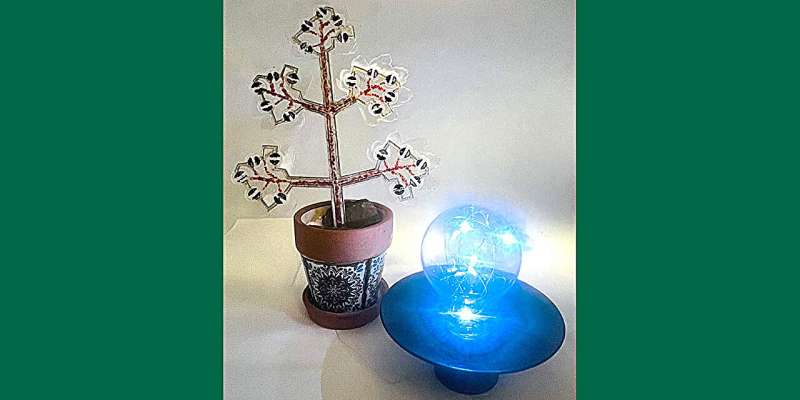
October 4, 2024 by Chris Kocher, Binghamton University
Collected at: https://techxplore.com/news/2024-10-artificial-purify-indoor-air-generate.html
On average, Americans spend about 90% of their time indoors, and the air we breathe at work, school or home affects our overall health and well-being.
Most air purification systems, however, are expensive, cumbersome and require frequent cleaning or filter replacement to function at optimum levels.
Binghamton University Professor Seokheun “Sean” Choi and Ph.D. student Maryam Rezaie are repurposing their research about bacteria-powered biobatteries—ingestible and otherwise—into a new idea for artificial plants that can feed off carbon dioxide, give off oxygen and even generate a little power.
They outline their results in a paper recently published in the journal Advanced Sustainable Systems.
“Especially after going through COVID-19, we know the significance of indoor air quality,” said Choi, a faculty member in the Thomas J. Watson College of Engineering and Applied Science’s Department of Electrical and Computer Engineering.
“Many sources can generate very toxic materials, like building materials and carpets. We breathe out and breathe in, and that builds up carbon dioxide levels. Also, there are risks from cooking and infiltration from the outdoors.”
Using five biological solar cells and their photosynthetic bacteria, Choi and Rezaie created an artificial leaf “for fun,” then realized the concept has wider implications. They built the first plant with five leaves, then tested its carbon dioxide capture rates and oxygen generation capability.
Although power generation of around 140 microwatts is a secondary benefit, Choi hopes to improve the technology to achieve a minimum output of more than 1 milliwatt. He also wants to integrate an energy storage system, such as lithium-ion batteries or supercapacitors.
“I want to be able to use this electricity to charge a cell phone or other practical uses,” he said.
Other upgrades could include using multiple bacteria species to ensure long-term viability and developing ways to minimize maintenance, such as water and nutrient delivery systems.
“With some fine-tuning, these artificial plants could be a part of every household,” Choi said. “The benefits of this idea are easy to see.”
More information: Maryam Rezaie et al, Cyanobacterial Artificial Plants for Enhanced Indoor Carbon Capture and Utilization, Advanced Sustainable Systems (2024). DOI: 10.1002/adsu.202400401
Journal information: Advanced Sustainable Systems

Leave a Reply